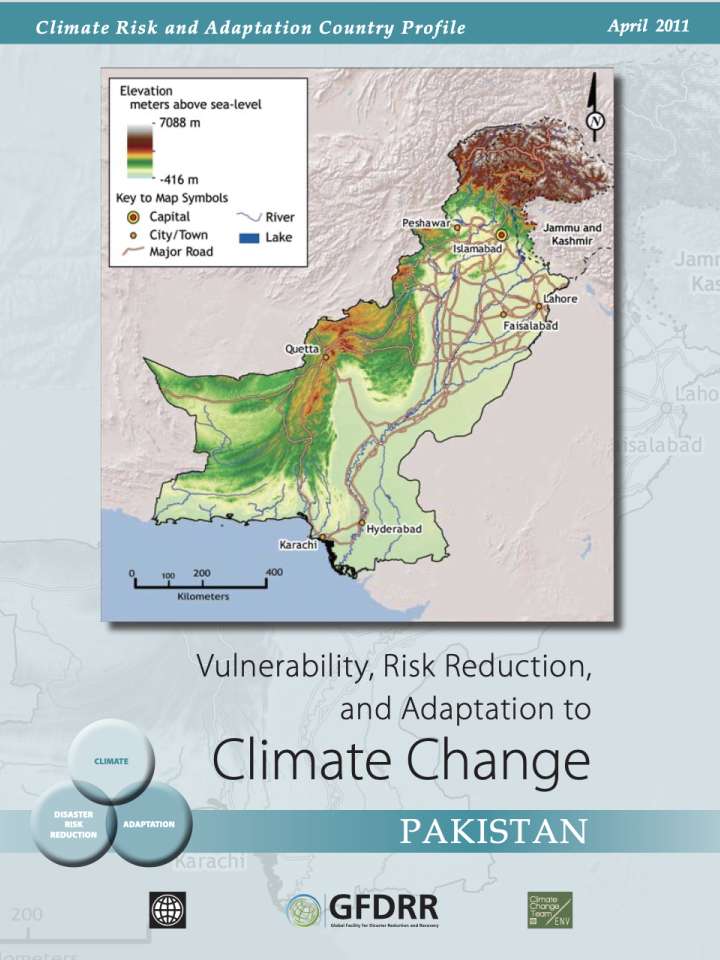Climate risk and adaptation country profile: Vulnerability, risk reduction, and adaptation to climate change: Pakistan
This paper profiles the vulnerability, risk reduction, and adaptation to climate change of Pakistan. A National Adaptation Programme of Action has yet to be published, but Pakistan’s Initial National Communication on Climate Change (2003) identifies many of the country’s urgent needs for adaptation action. Further research and possible action have been called for in the sectors of water resources, agriculture, forestry, coastal zones, livestock, biodiversity, energy, and industry.
The paper finds the following key point for climate change in Pakistan:
- Expected temperature increase in Pakistan as whole is higher than the expected global average increase.
- Projected temperature increase in the north is somewhat higher than in the south of Pakistan.
- Projected temperature increase in winter is more than that in summer.
- As yet, it is not possible to get a clear picture for precipitation change, due to large model uncertainties for the region.
- The yields of both wheat and rice will decrease everywhere except in the Northern Mountainous areas where wheat yields could potentially increase.
- The impact of climate change on Pakistan’s water resources is unclear due to the uncertain behavior of the Karakoram glaciers.
Explore further
